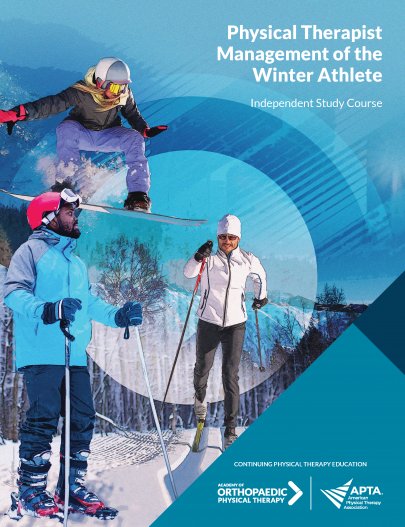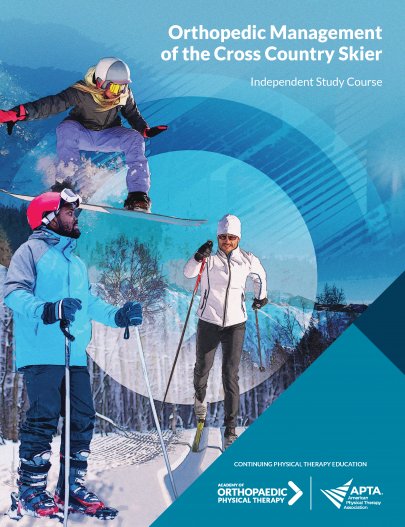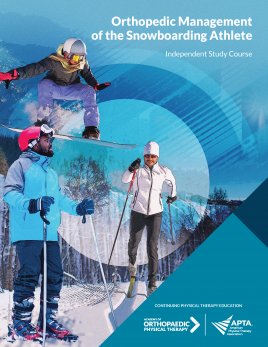
Orthopedic Management of the Snowboarding Athlete
| Online Only | |
|---|---|
| APTA Orthopedics Member | $55 |
| Non-APTA Orthopedics Member | $205 |
Course Description
Snowboarding is a unique sport in its culture, disciplines, demands, and injury patterns. Limited research is available on sport-specific biomechanics, mechanisms of injury, treatment interventions to facilitate return to snowboarding, and injury prevention strategies. Considering the limited evidence, a multifactorial approach to injury risk reduction is proposed as the best strategy. Injury surveillance data provide insight into the predominant orthopaedic and non-orthopaedic injuries of which to be aware. When an injury occurs, general criteria-based progressions are applicable to all riders and help athletes return to basic activities of daily living and snowboarding. However, rehabilitation should also be individualized to the rider’s goals and riding style. Creativity and fun are central tenets of snowboarding and are recommended for rehabilitating these athletes. This monograph details the sport of snowboarding, including biomechanics, common injuries, injury recovery, and injury prevention. Case studies are provided to integrate gained knowledge in a clinically meaningful way.
Course Overview
Course Format: Online
Contact Hours: 5 contact hours
State Approval: AOPT courses are accepted in all states plus the District of Columbia, as allowed by the type of course requirements in state regulations. A small number of states require APTA to seek pre-approval of courses. The approval codes for these states can be found here. Always check with your State Licensing Board to confirm contact hours offered.
View Full State Approval InformationCourse Objectives
- Describe joint kinematics, kinetics, and muscle activation throughout a snowboarding turn and during freestyle snowboarding.
- Interpret how external factors, including snow conditions, surface inclination, and ability level influence snowboarding biomechanics.
- Analyze biomechanical risk factors that may contribute to snowboarding injury.
- Apply reasoning of snowboarding physiological demands to rehabilitation programming for common snowboard injuries.
- Recognize environmental factors related to snowboarding.
- Articulate the relationship between human and environmental factors and snowboarding injuries.
- Identify clinical presentations of common snowboarding-related injuries and discover the management of these conditions.
- Develop an appropriate return to snowboarding program.
- Compare the strengths and weaknesses of injury prevention in snowboarding and apply injury prevention methods to the individual snowboarder.
Topics and Authors
Helen Bradley, PT, MSc, SCS; Brett T. Mueller, PT, DPT, SCS
Customers Frequently Viewed
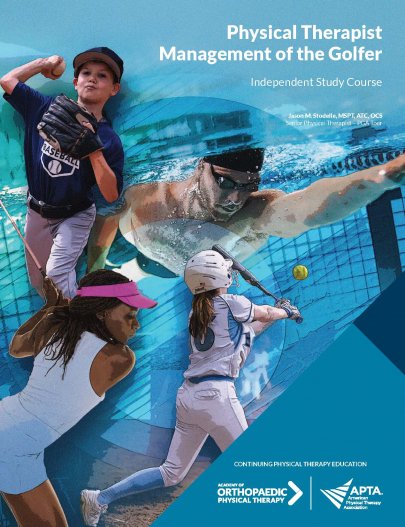
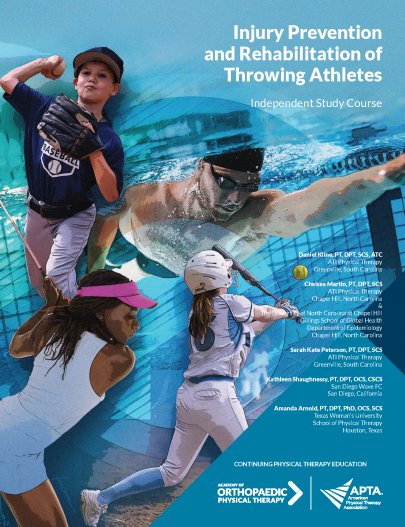
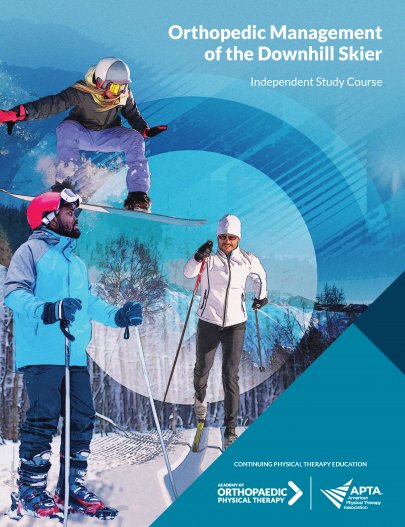
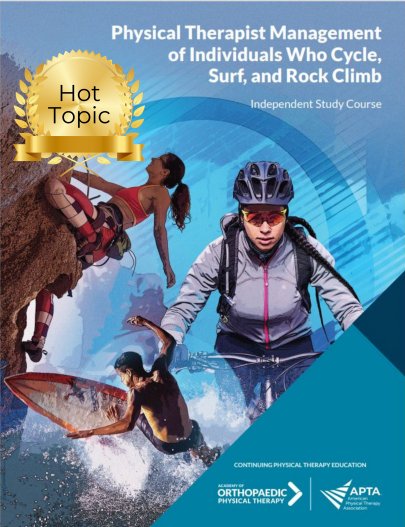
Add To Cart
Which version of the course would you like to purchase?
Members Only
You need to be a member to buy this course.
Join today to enjoy exclusive deals and prices on all courses.
Join Now